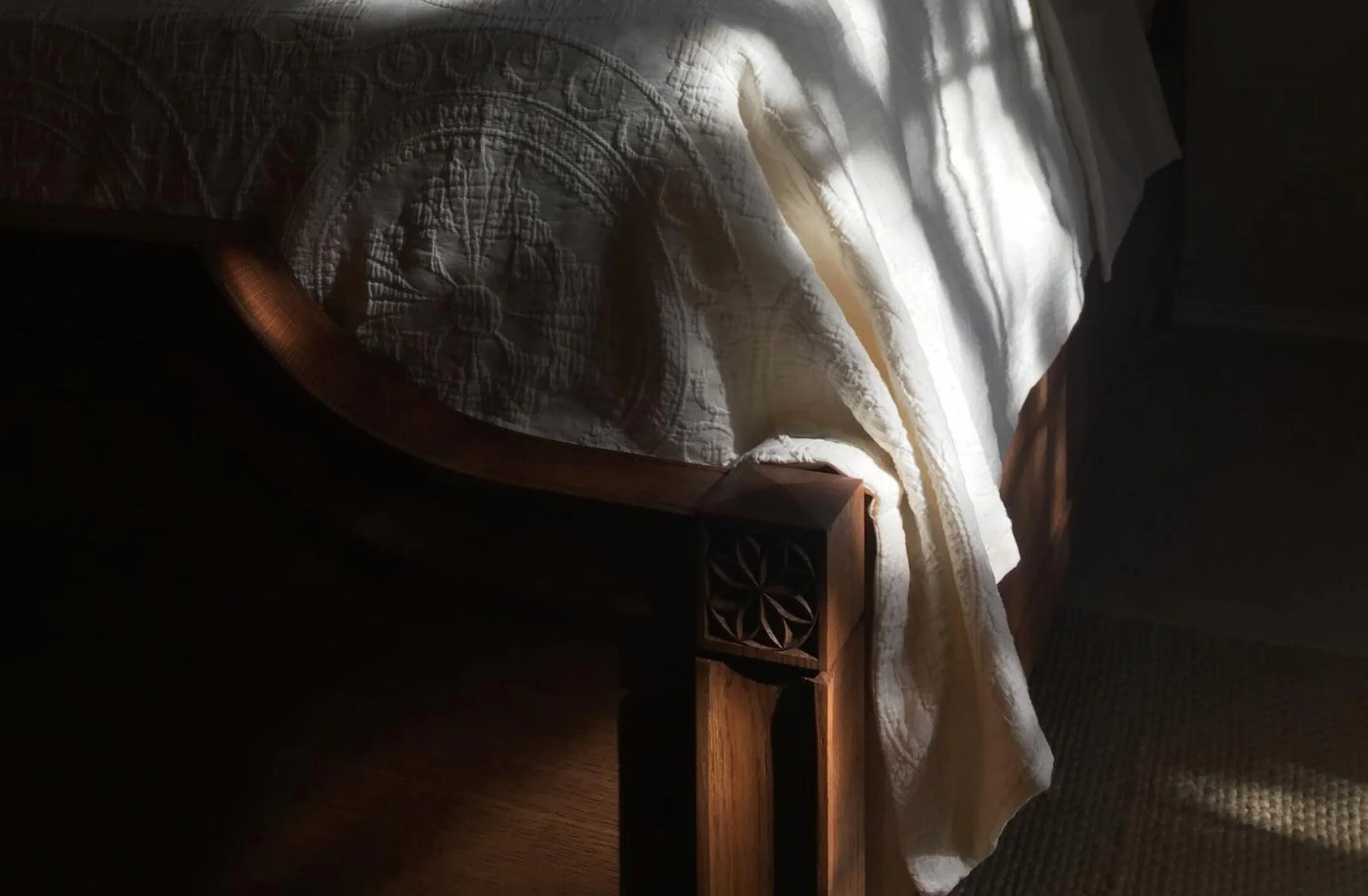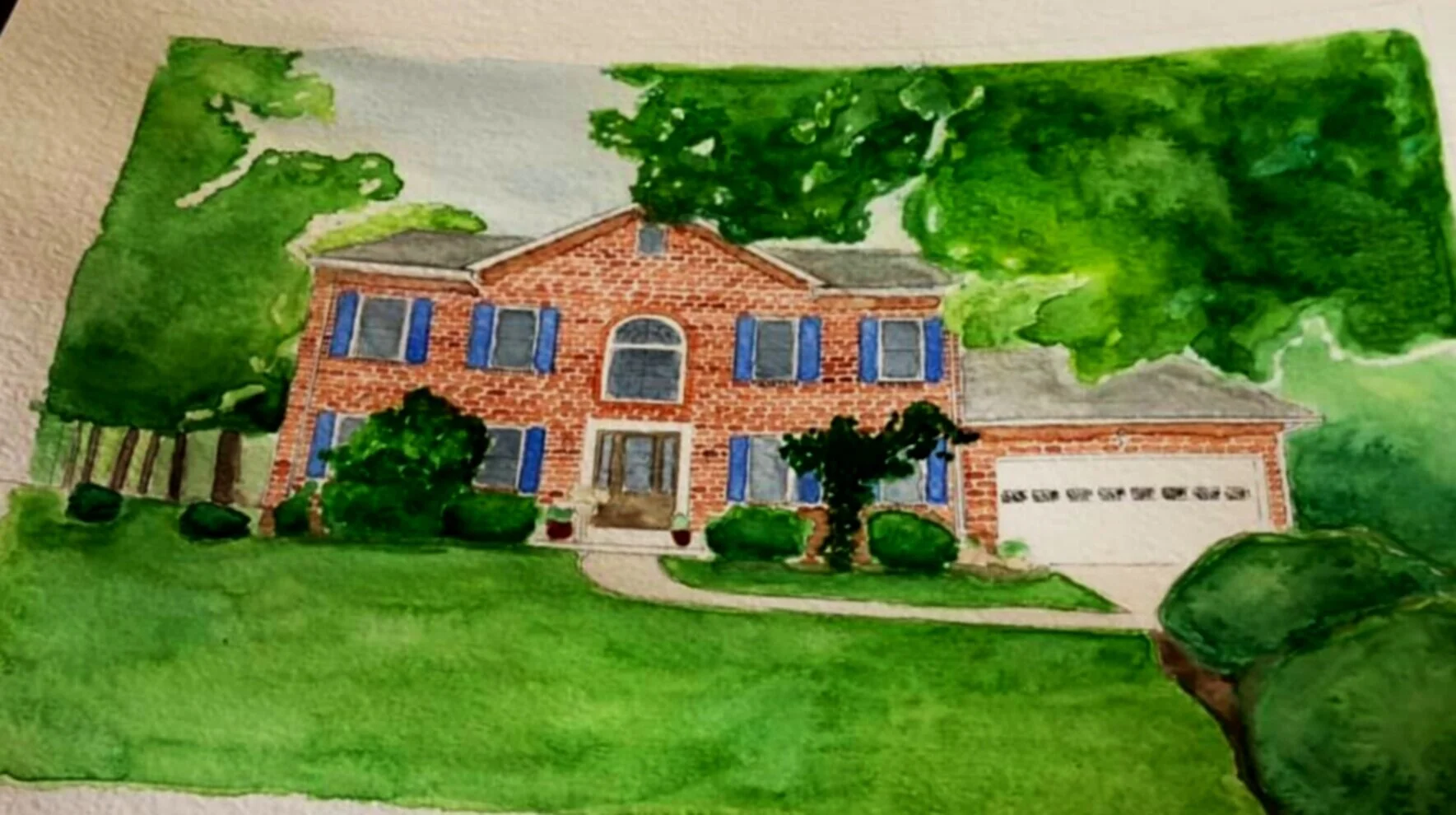Little Way Design Co
When I was 21 years old, my drummer and I earned the nickname “the fashion police” from our other three bandmates. It all started when our lead guitarist picked out the absolute sickest outfit (and not in a “rawk” sort of way — it actually made my soul nauseous) for our biggest show to date, then insisted on wearing it despite our protests. Sorry Ryan, but a bright orange undershirt under a beige plaid short-sleeved collared shirt is still the worst outfit I’ve ever seen. Love you, brother.
The reality is, whether you are a 20-something preparing for a big breakthrough gig or an ordinary human being who just wants to look presentable and moderately stylish as you sit at a coffee shop on a brisk autumn day, design matters. And wouldn’t you know it, there are some amazing Catholic Creatives who are doing something about it.
One of these creatives is Katerina Cabello Deem, owner and designer of Little Way Design Co. As the name indicates, Katerina draws inspiration from St Thérèse of Lisieux and her value of the simple, the ordinary, and the little things, and channels this philosophy in her art and the mission that fuels it.
Something that instantly struck me about Katerina’s work is the simple elegance of her designs. And as someone who has worked for the past decade in high school ministry, I’ve seen the entire spectrum of Catholic design.
A few years ago, a youth minister I was assisting designed a group t-shirt for a Steubenville conference that literally had a Catechism paragraph (not a Bible verse — a. Catechism. paragraph.) plastered in all-caps, block-letter, C-O-L-L-E-G-E-style typeface on a blindingly astroturf-green garment. I was playing on-stage as a worship leader at that conference, and do you think that shirt made it through the fashion police filter? Such no.
Contrast that with some of the slick designs you see from the graphics and design professionals at Life Teen, Pal Campaign and Blessed Is She, which take an almost covert approach to spirituality at times, blending in seamlessly with the pulse of our contemporary culture.
What I absolutely love about Katerina’s design style is that it occupies the perfect middle ground between overt-Catholic and stealth-Catholic. It is elegantly minimalist. It draws on real and meaningful devotions with a simple aesthetic. It does not shy away from depth, but also does not feel cluttered or excessive. There is a balance, an order, a clear sense of purpose.
My personal favorite item in the Little Way Design Co shop right now is the Sacred Heart-themed sweatshirt.
Sacred Heart sweatshirt by Little Way Design Co
The first thing about this Sacred Heart sweatshirt that caught my eye was the color: I absolutely adore the primary claret model of this sweatshirt. It’s a bold tone. It’s really nicely suited to the autumn and winter months. It’s reasonably unique, but not attention-seeking. Ticks all the boxes, really. (The design also comes in black, heather grey and navy, each of which look brilliant as well.)
Katerina was kind enough to share a bit about her work and mission, and describes the inspiration behind the piece as something of an exercise in trust.
I never quite really understood the Sacred Heart devotion and thought it was yet another weird thing that Catholics did...until two years ago, during a particularly dark time in my life, a priest encouraged me to rest in the Heart of Jesus and be assured of His Love. My life has never been the same since. Interestingly enough, I encountered so many roadblocks while creating the design and it took me months as opposed to weeks. But the time I kept working on it and refining it, only served as time to meditate on the devotion and trust in His love even more.
Katerina Cabello Deem
Heck yes.
I really love that the simplicity of the one-color-on-one-color apparel design reflects the spiritual journey Katerina so eloquently and vulnerably articulated. I can have a habit of over-complicating things in my own spiritual life. Maybe this sweatshirt will help serve as a reminder to me — both physically and spiritually — to keep things simple.
That idea makes a lot of sense after all, given Katerina’s formation and journey to Little Way Design Co. She is a chemical engineer who worked in the oil industry for 10 years, somehow managing to work a Masters Degree of Theology into the picture along the way. And even more central to her life and faith: Katerina is a mother of four children.
All of these occupational influences show themselves in Katerina’s work. Her design bears the logical and organized mark of her background in engineering, but also demonstrates a playfulness and flowery aesthetic of someone creating with her own children in mind. It’s a unique marriage of what might be considered opposing angles to design, which absolutely works for Katerina’s style. And it looks jolly good on a sweatshirt.
I’ll say this too: Katerina’s philosophy speaks deeply to me. Katerina recognizes the power of visual storytelling, especially as our culture relies more and more heavily on social media and digital marketing, and her mission aims to bring something of true value to the table in light of this cultural reality.
I believe that for us Catholics, the incredible visual power of design has tremendous potential in evangelizing and opening our hearts to the divine. I see how my kids, some who can't even utter words yet, are able recognize logos and brands and are deeply affected by them (try giving your child the generic Goldfish bag as opposed to the real thing!). So I want my kids and our family to be surrounded by images that remind us who we are, where we came from, where we want to go (heaven) and what we need to do to get there. That's why I created Little Way Design Co: to share those images with other Catholics who would like to make them part of their lives as well.
Katerina Cabello Deem
All of the feels.
You’ve gotta love what Katerina is doing. “Little Way Design Co” is aptly named. It serves to create items that are both fashionable and intentional in instilling in the lay Church a mindfulness and appreciation for the little forms of beauty. Perhaps one day it’s in finding yourself admiring the fineness of the rose stems surrounding the Sacred Heart on Katerina’s new sweatshirt. Maybe the next day it’s simply acknowledging and recognizing a unique blessing in one’s life that ordinarily gets overlooked.
However this little way takes form in your life, we hope you are as inspired by Katerina’s designs as we are. Be sure to share some love with her, check out her shop, and keep making brilliant creations!
by Benjamin Jude
Worship Leader / Recording Artist
CC Admin
















































